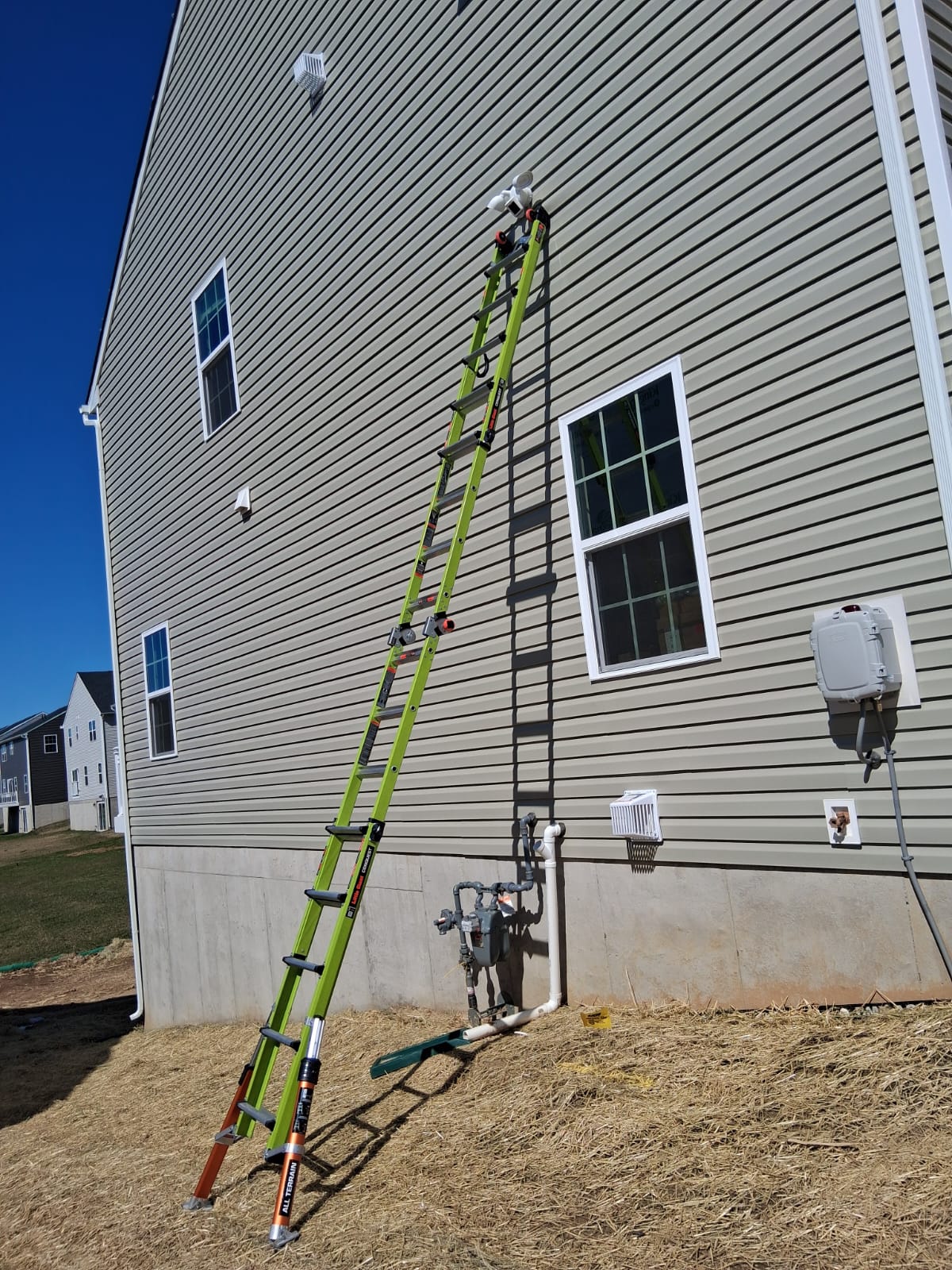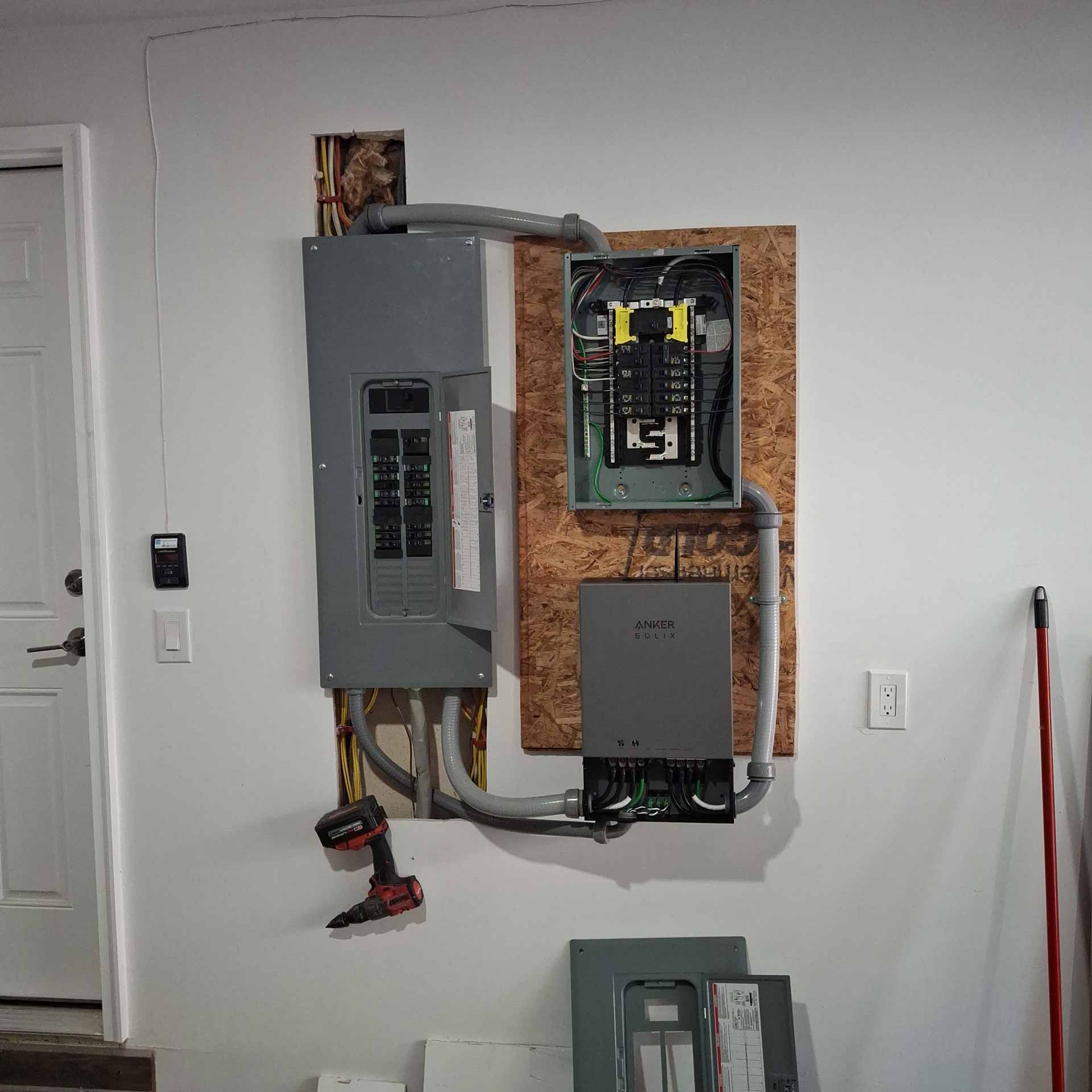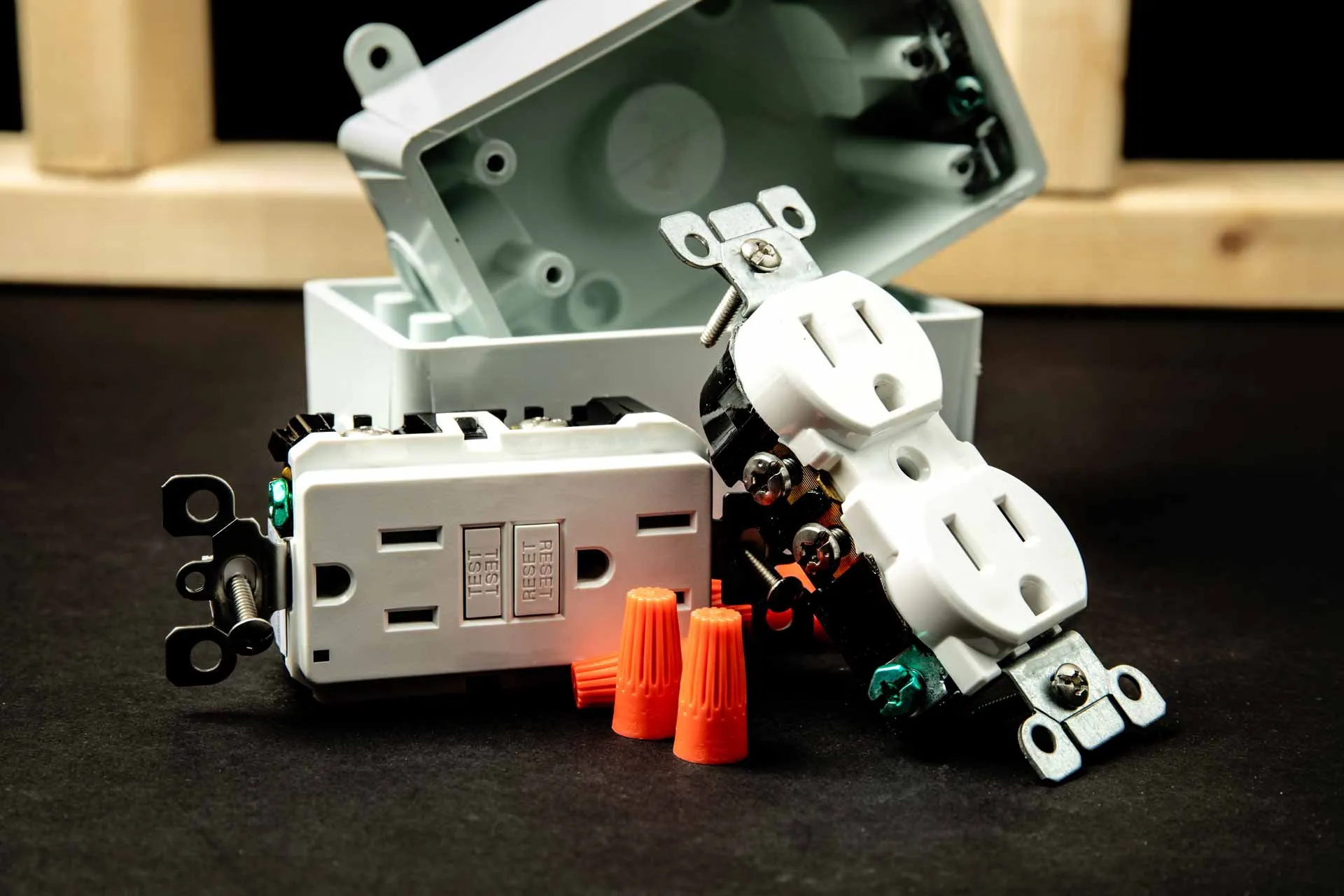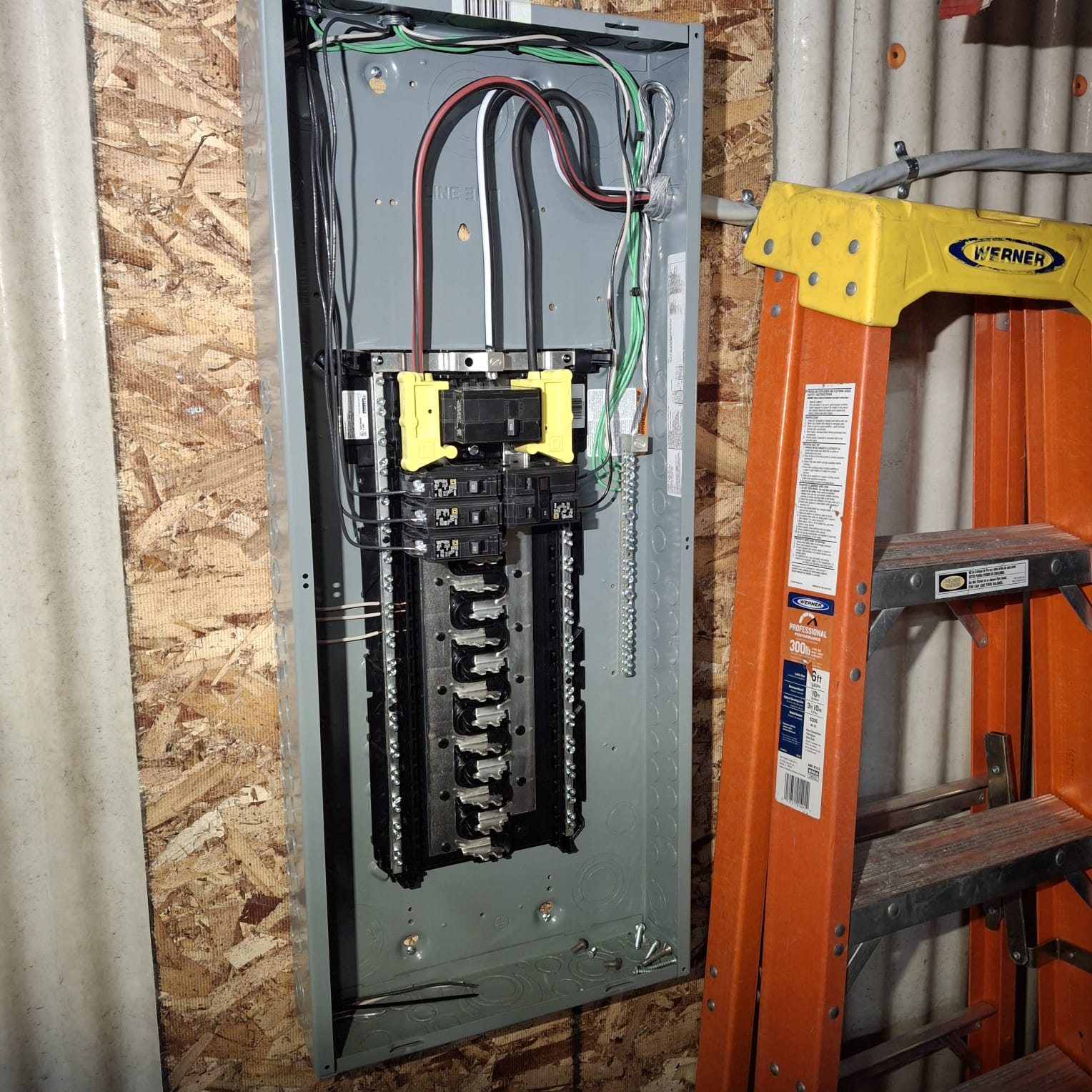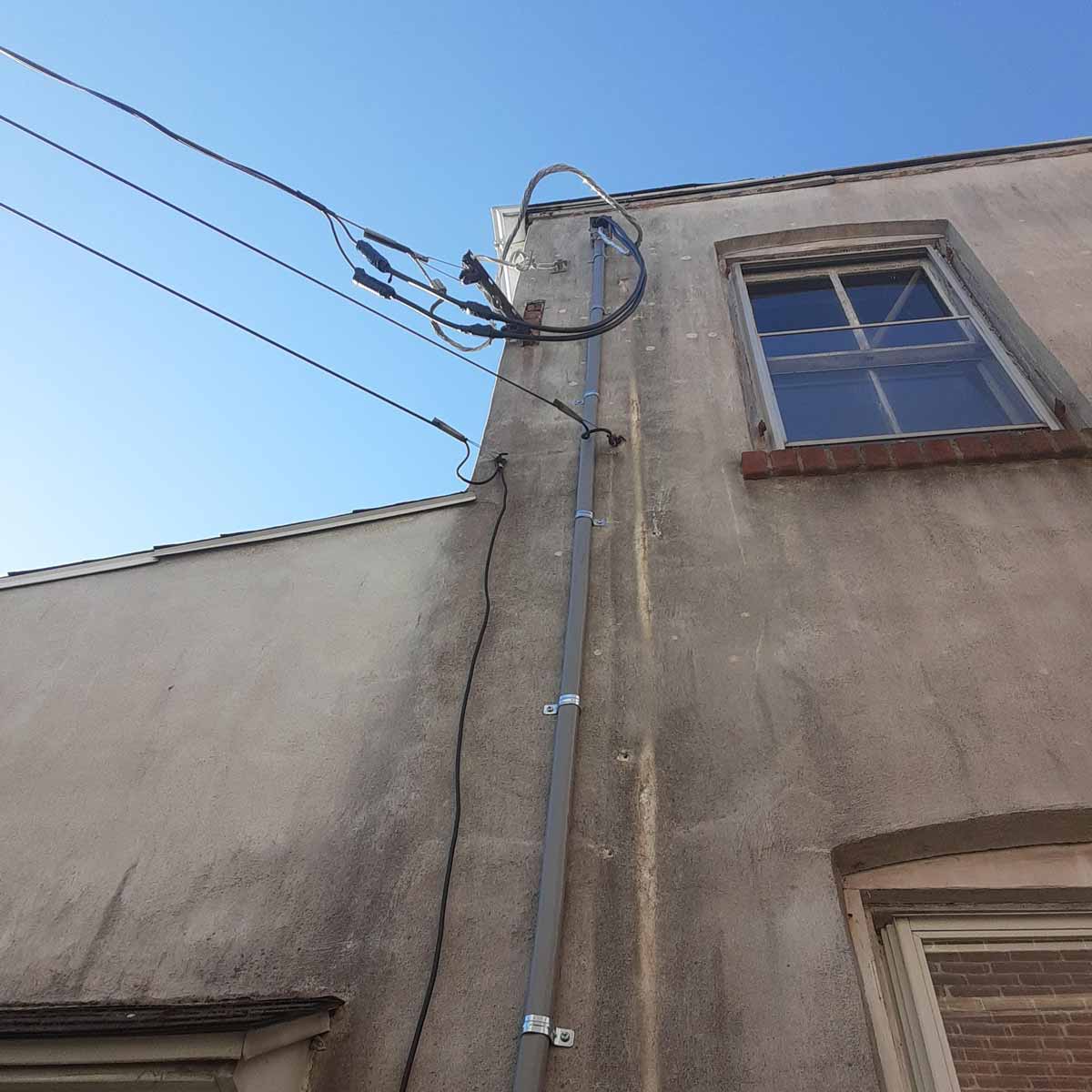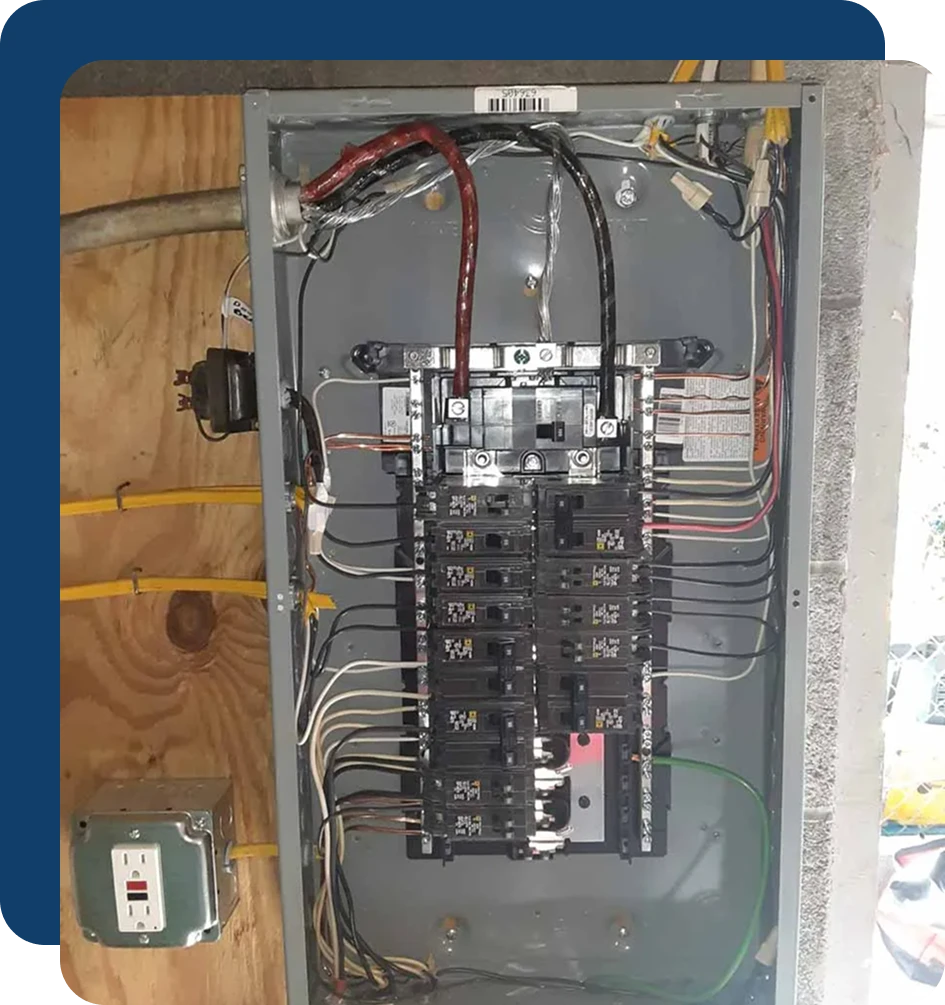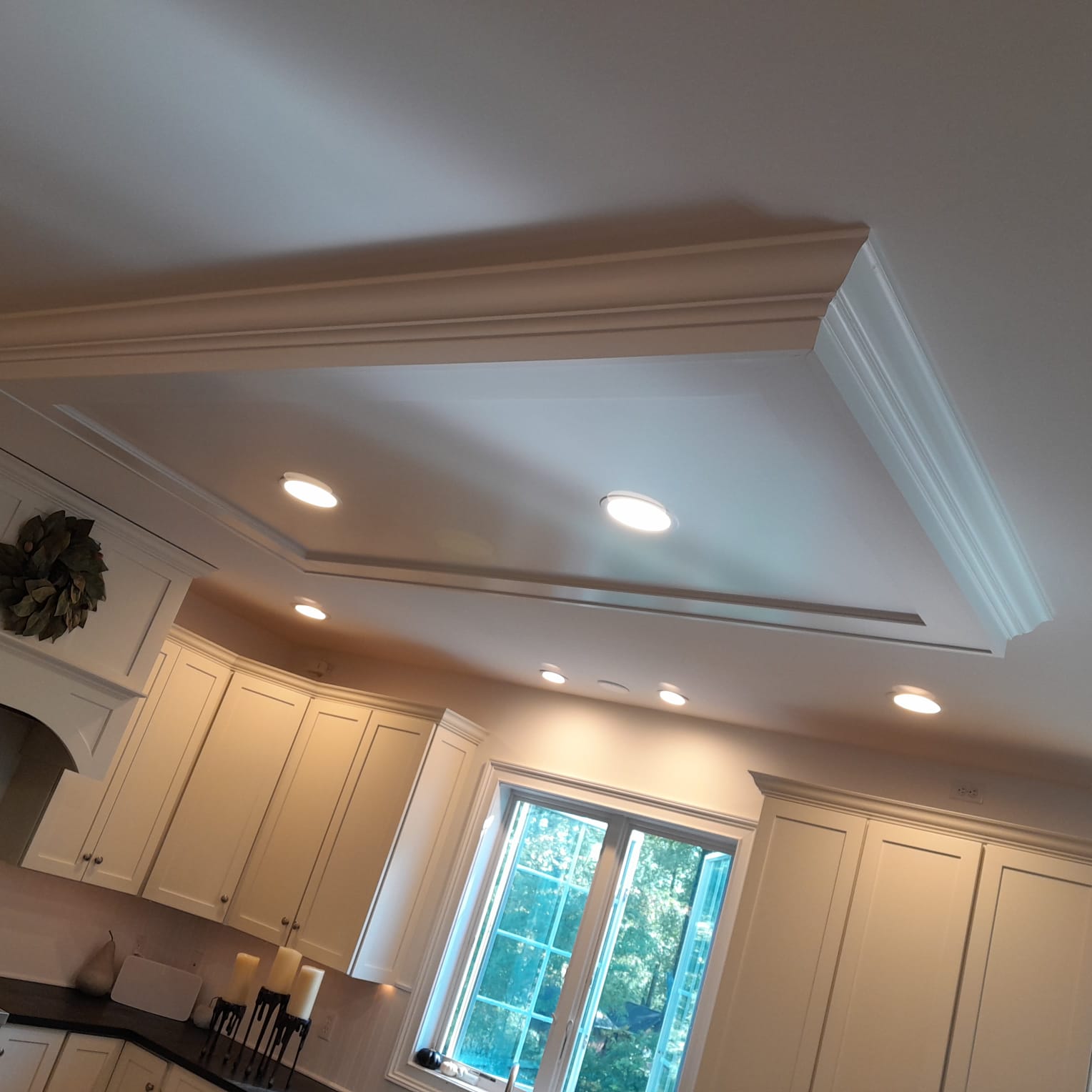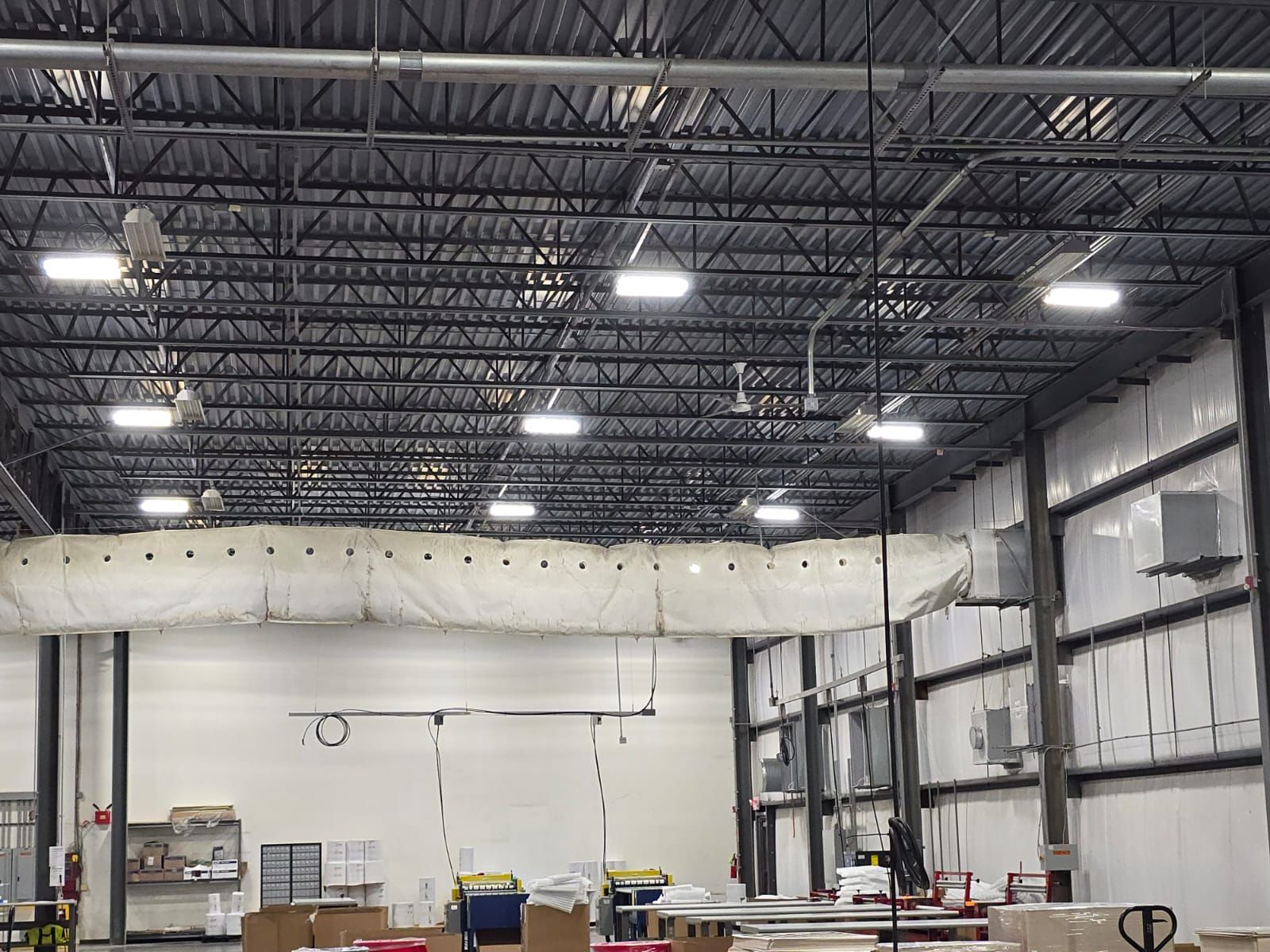Essential Home Wiring Optimization Tips
- Upgrading your electrical panel improves safety and increases capacity
- GFCI outlets are crucial in wet areas like kitchens and bathrooms
- LED lighting installations reduce energy consumption by up to 75%
- Regular electrical system inspections prevent hazards and failures
- Proper wire gauge selection is essential for safe electrical installations
- Strategic outlet placement enhances convenience and functionality
- Dedicated circuits for major appliances prevent overloading
- Professional assistance ensures code compliance and optimal safety
- Smart home integration requires careful planning and professional installation
- Energy-efficient upgrades can reduce electricity costs by 20-30%
Key Takeaways
| Safety Improvements | GFCI/AFCI protection, proper wire gauge selection, and regular inspections significantly reduce electrical hazards |
| Energy Efficiency | LED lighting, smart home integration, and optimized circuits can reduce electricity consumption by 20-30% |
| Capacity Planning | 200-amp service panels provide adequate capacity for most modern homes with high-demand appliances |
| Convenience Factors | Strategic outlet placement, USB integration, and smart controls enhance daily living experience |
| Professional Requirements | Panel upgrades, circuit installation, and whole-house rewiring always require licensed electrical contractors |
Introduction: Understanding the Importance of Optimized Home Wiring
Modern homes demand more from their electrical systems than ever before. From smart devices to high-powered appliances, our electrical needs have grown significantly over the years. Optimizing your home’s wiring isn’t just about making things more convenient—it’s about keeping your family safe, saving energy, and making sure your home can handle future technology. The average American home now has more than 40 electronic devices and appliances—that’s three times more than in the 1990s!
Old or inadequate wiring can cause many problems, like circuit breakers that trip often, lights that flicker, and even dangerous electrical fires. By improving your home’s wiring, you can ensure power flows reliably throughout your house while reducing safety risks and saving on energy bills. According to the National Fire Protection Association, electrical problems caused about 46,700 home fires each year between 2015-2019, making them the second most common cause of house fires.
This guide will show you all the important parts of home wiring optimization, from electrical panel upgrades to smart outlet placement and modern lighting options. Whether you’re building a new home, fixing up an old one, or just want to improve your electrical system, this information will help you make good choices for a safer, more efficient home.
Assessing Your Current Electrical System
Before changing anything in your home’s wiring, you need to take a good look at your current electrical system. This assessment will help find potential problems, figure out how much power you need, and create a solid starting point for making improvements. A good assessment includes looking at your electrical panel, testing outlets and switches, checking how much power your home uses, and finding any safety problems or code violations.
Many homeowners don’t realize they have outdated or dangerous electrical systems until something goes wrong. At Estevez Electric, we often find that homes built before the 1980s have electrical systems that just weren’t made to handle today’s technology needs. For example, a typical home from the 1960s might have had a 60-amp service panel with only about twelve circuits—nowhere near enough for today’s homes with multiple computers, entertainment systems, and powerful kitchen appliances.
Signs Your Home Wiring Needs Attention
Several warning signs indicate your electrical system may need attention:
- Frequent circuit breaker trips: If your breakers trip regularly, your circuits may be overloaded, particularly when running multiple appliances simultaneously
- Flickering or dimming lights: This often indicates loose connections or inadequate wiring, especially when large appliances cycle on
- Warm outlets or switches: Excessive heat suggests potential fire hazards and dangerous resistance in connections
- Burning odors: Any smell of burning plastic or electrical components requires immediate attention
- Outdated wiring types: Knob-and-tube or aluminum wiring in older homes presents significant safety risks
Understanding Your Home’s Electrical Load Requirements
Determining your home’s electrical load is crucial for knowing if your current system can handle your power needs. This involves cataloging all electrical devices and appliances in your home and checking if your electrical panel can support them running simultaneously.
To calculate your home’s electrical load:
- List all electrical appliances and devices: Document everything that draws power in your home comprehensively
- Calculate wattage requirements: Add up the wattage needs of all devices that might run simultaneously
- Determine amperage needs: Convert total wattage to amperage using the formula: Amps = Watts ÷ Volts
Most modern homes need at least a 200-amp service panel to handle today’s electrical demands. If you still have a 100-amp panel or smaller, an upgrade should be a priority for better performance and safety.
Electrical Panel Upgrades: The Foundation of Optimized Wiring
Your electrical panel is the heart of your home’s electrical system. An old or undersized panel can limit your ability to use modern appliances safely and efficiently. Upgrading this key component is often the first step in optimizing your home’s wiring. The electrical panel serves as the central hub for all electrical circuits in your home, controlling and protecting each circuit with individual breakers.
When to Consider an Electrical Panel Upgrade
Several scenarios warrant an electrical panel upgrade:
- Age of the panel: Panels over 25 years old may not meet current safety standards
- Insufficient capacity: If you’re adding major appliances or experiencing frequent overloads
- Fuse boxes: Older homes with fuse boxes should upgrade to modern circuit breakers
- Home renovations: Major remodels often require additional electrical capacity
- Insurance requirements: Some insurance companies require updated electrical systems
Benefits of a Modern Electrical Panel
Upgrading your electrical panel provides numerous advantages:
- Increased capacity: Modern panels typically offer 200-amp service, supporting more devices and appliances
- Enhanced safety: New panels include advanced circuit breakers with better protection against electrical faults
- Improved efficiency: Better power distribution can reduce energy waste and provide more consistent voltage
- Smart home compatibility: Modern panels can accommodate home automation systems
- Increased home value: Updated electrical systems are attractive to potential buyers
As experienced electrical contractors, we understand that panel upgrades require specialized knowledge and skills. Our licensed professionals ensure that all work meets or exceeds National Electrical Code requirements.
Strategic Circuit Planning and Distribution
Good circuit planning is crucial for optimizing your home’s electrical system. Well-designed circuits prevent overloads, reduce energy waste, and make your home more convenient to live in. Modern circuit planning considers not just electrical needs but also how different areas of your home use power, ensuring high-use areas have adequate capacity while keeping the entire system balanced.
Dedicated Circuits for Major Appliances
High-power appliances should always have dedicated circuits to prevent overloads and ensure consistent performance. The National Electrical Code specifies requirements for dedicated circuits based on appliance power consumption and usage patterns.
Appliances that should have dedicated circuits include:
- Kitchen appliances: Refrigerators, dishwashers, microwaves, and ranges each require dedicated circuits
- Laundry equipment: Washers and dryers need their own circuits due to high power demands
- HVAC systems: Heating and cooling equipment should have dedicated power sources
- Electric vehicle chargers: As EV adoption grows, dedicated charging circuits are increasingly important
Room-by-Room Circuit Optimization
Different areas of your home have unique electrical requirements:
- Kitchen: Needs multiple 20-amp circuits for countertop appliances, plus dedicated circuits for major appliances
- Bathrooms: Need GFCI-protected circuits for safety in wet environments
- Living areas: Need multiple 15-amp circuits to accommodate entertainment systems and lighting
- Home offices: Need dedicated circuits for computer equipment and telecommunications
- Outdoor spaces: Need weather-resistant circuits for exterior lighting, tools, and seasonal decorations
Professional electricians can help design an optimal circuit layout that balances your current needs with future expansion possibilities.
Safety Enhancements: GFCI and AFCI Protection
Modern electrical systems include specialized protection devices that greatly improve safety. Ground Fault Circuit Interrupters (GFCIs) and Arc Fault Circuit Interrupters (AFCIs) act like safety guards for your electrical system, constantly monitoring for dangerous conditions. According to the Consumer Product Safety Commission, GFCIs alone have helped reduce electrocution deaths by more than 70% since they were introduced.
GFCI Outlets: Essential Protection in Wet Areas
GFCIs protect against electrical shocks by quickly shutting off power when they detect current leakage. They monitor current flow and can cut power in as little as 1/40th of a second when they detect imbalances as small as 4-6 milliamps.
The National Electrical Code requires GFCI protection in:
- Kitchens: All countertop receptacles must have GFCI protection
- Bathrooms: All receptacles require GFCI protection due to water exposure
- Garages and outbuildings: All receptacles need GFCI protection
- Outdoor areas: All accessible receptacles require GFCI protection
- Laundry rooms and utility sinks: All receptacles within 6 feet of water sources
AFCI Protection: Preventing Electrical Fires
AFCIs detect dangerous electrical arcs that can cause fires. They monitor electrical waveforms and interrupt power when they detect patterns consistent with dangerous arcing. The NEC now requires AFCI protection in most living areas, including bedrooms, living rooms, dining rooms, family rooms, and hallways.
For the best protection, consider installing dual-function GFCI/AFCI breakers or outlets where both types of protection are beneficial.
Optimizing Outlet Placement and Capacity
Strategic outlet placement makes your home more convenient and reduces the need for potentially dangerous extension cords and power strips. Modern homes typically need more outlets than older properties because we use many more electronic devices today. The Electrical Safety Foundation International reports that extension cords cause approximately 3,300 home fires annually.
Guidelines for Optimal Outlet Placement
Follow these guidelines for outlet placement:
- Spacing: Install outlets every 6-8 feet along walls in living areas
- Height: Standard height is 12-18 inches from the floor (higher in kitchens and workspaces)
- Special areas: Install outlets above countertops, near entertainment centers, and in dedicated workspaces
- Outdoor access: Weather-resistant outlets on exterior walls with GFCI protection
Upgrading to USB and Smart Outlets
Modern outlet options enhance functionality while reducing adapter clutter:
- Built-in USB outlets: Allow direct charging without adapters
- Smart outlets: Offer remote control and scheduling capabilities
- Pop-up outlets: Provide power when needed and hide away when not in use
- Floor outlets: Ideal for open floor plans where furniture may be positioned away from walls
Updating your home’s outlets is a relatively simple project that can significantly improve everyday convenience.
LED Lighting: Energy Efficiency and Flexibility
Lighting accounts for about 15% of a typical home’s electricity use. Optimizing your lighting system with LED technology can greatly reduce energy consumption while improving your home’s appearance and functionality. According to the U.S. Department of Energy, widespread LED adoption could save about 348 TWh of electricity annually—equivalent to the output of 44 large power plants.
Benefits of LED Lighting Systems
LED lighting offers numerous advantages:
- Energy efficiency: LEDs use up to 75% less energy than incandescent bulbs
- Longevity: Quality LEDs can last 25,000 hours or more—up to 25 times longer than incandescent bulbs
- Versatility: Available in various color temperatures, brightness levels, and form factors
- Instant illumination: LEDs reach full brightness immediately without warm-up time
- Reduced heat output: LEDs generate minimal heat, reducing cooling costs and fire risks
Strategic Lighting Design for Different Spaces
Different areas benefit from specialized lighting approaches:
- Kitchens: Need bright task lighting for work areas, supplemented by ambient lighting
- Living areas: Need layered lighting with ambient, task, and accent options
- Bedrooms: Need adjustable lighting with dimming capabilities for versatility
- Bathrooms: Need even, shadow-free lighting around mirrors, plus general illumination
- Outdoor spaces: Need security, pathway, and accent lighting for safety and aesthetics
Professional LED lighting installation ensures proper fixture selection, optimal placement, and appropriate control systems.
Smart Home Integration and Automation
Modern home wiring optimization increasingly includes provisions for smart home technology. These systems enhance convenience, security, and energy efficiency through automated control and monitoring. The global smart home market is expected to grow from $78.3 billion in 2020 to over $135 billion by 2025.
Wiring Considerations for Smart Home Systems
Implementing smart home technology requires careful planning:
- Neutral wires: Many smart switches require neutral wires, which may be absent in older homes
- Dedicated circuits: Complex systems benefit from dedicated power sources to prevent interference
- Structured wiring: Centralized distribution panels simplify management of low-voltage systems
- Future-proofing: Including conduit or access pathways allows for easier future upgrades
Popular Smart Home Integrations
Consider these popular smart home features:
- Smart lighting systems: Programmable to match daily routines and controlled via smartphone apps
- Connected thermostats: Adapt to preferences and schedules while minimizing energy consumption
- Security systems: Offer remote monitoring and integration with other home systems
- Whole-house audio/video: Allow entertainment throughout your home from central control
- Voice control integration: Serve as central interface for multiple smart home functions
Working with experienced electrical professionals ensures proper smart home infrastructure installation and configuration.
Cost Considerations and Return on Investment
Understanding the financial aspects of home wiring optimization helps homeowners make informed decisions about their electrical investments.
Typical Upgrade Costs
| Upgrade Type | Typical Cost Range | Expected Lifespan | Energy Savings |
|---|---|---|---|
| Electrical Panel Upgrade | $1,500 – $4,000 | 25-40 years | 5-10% reduction |
| Whole-House LED Conversion | $800 – $2,000 | 15-20 years | 75% lighting costs |
| GFCI/AFCI Outlet Installation | $150 – $300 per outlet | 15-20 years | Safety improvement |
| Smart Home Integration | $2,000 – $8,000 | 10-15 years | 10-25% reduction |
| Additional Circuit Installation | $300 – $800 per circuit | 25-30 years | Efficiency improvement |
Investment Return Example
A comprehensive electrical optimization project costing $8,000-12,000 typically provides:
- Annual energy savings: $300-600
- Increased home value: $6,000-10,000
- Enhanced safety and convenience: Priceless peace of mind
Maintenance and Safety Monitoring
Regular maintenance ensures your optimized electrical system continues to operate safely and efficiently.
Regular Inspection Schedule
Establish a routine maintenance schedule:
- Monthly: Test GFCI outlets using test/reset buttons
- Quarterly: Check for warm outlets, flickering lights, or unusual odors
- Annually: Professional electrical system inspection
- As needed: Address any electrical issues immediately
Safety Warning
Never attempt electrical work beyond your expertise. Complex installations, panel work, and circuit additions always require licensed electrical contractors. Improper electrical work can result in fires, electrocution, or code violations that affect insurance coverage.
Future-Proofing Your Electrical System
Planning for future technology ensures your electrical system remains relevant and functional as your needs evolve.
Emerging Technology Considerations
Consider these future developments when optimizing your wiring:
- Electric vehicle charging: Plan for Level 2 charging capabilities even if you don’t currently own an EV
- Energy storage systems: Consider provisions for battery backup systems and solar integration
- Enhanced smart home features: Plan for increasing automation and connectivity requirements
- Higher power demands: Account for potential increases in electrical usage from future appliances
Professional Consultation
At Estevez Electric LLC, our licensed electricians specialize in comprehensive home electrical optimization. We provide expert assessment, design, and installation services that ensure your electrical system meets current needs while providing flexibility for future expansion. Contact us for a professional evaluation of your home’s electrical optimization opportunities.
Conclusion: Creating a Safer, More Efficient Home
Optimizing your home’s wiring is an investment in safety, efficiency, and convenience that pays dividends for years to come. From upgrading your electrical panel to implementing smart home technologies, each improvement contributes to a more functional and valuable home. The key to successful electrical optimization lies in comprehensive planning, professional installation, and ongoing maintenance.
Modern electrical systems do more than just power your devices—they enhance your quality of life while protecting your family and property. By working with qualified professionals and following best practices, you can create an electrical system that meets today’s demands while being ready for tomorrow’s innovations.
The most effective approach combines immediate safety improvements with strategic upgrades that provide long-term value. Whether you’re addressing existing problems or preparing for future needs, professional electrical optimization ensures your home’s electrical system supports your lifestyle safely and efficiently.
Take the Next Step
Contact Estevez Electric LLC today to schedule a comprehensive electrical assessment. Our experienced team will evaluate your current system, identify optimization opportunities, and provide a customized plan that enhances safety, efficiency, and convenience throughout your home.






